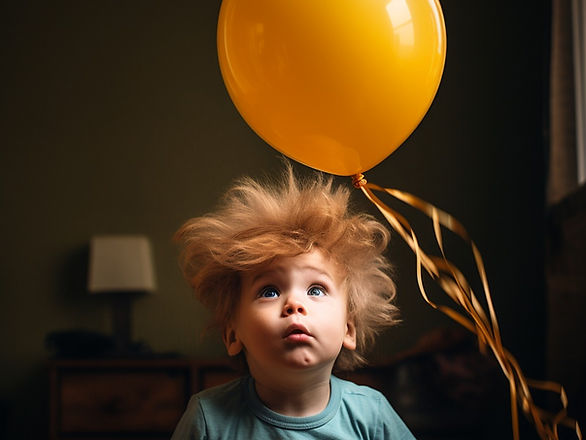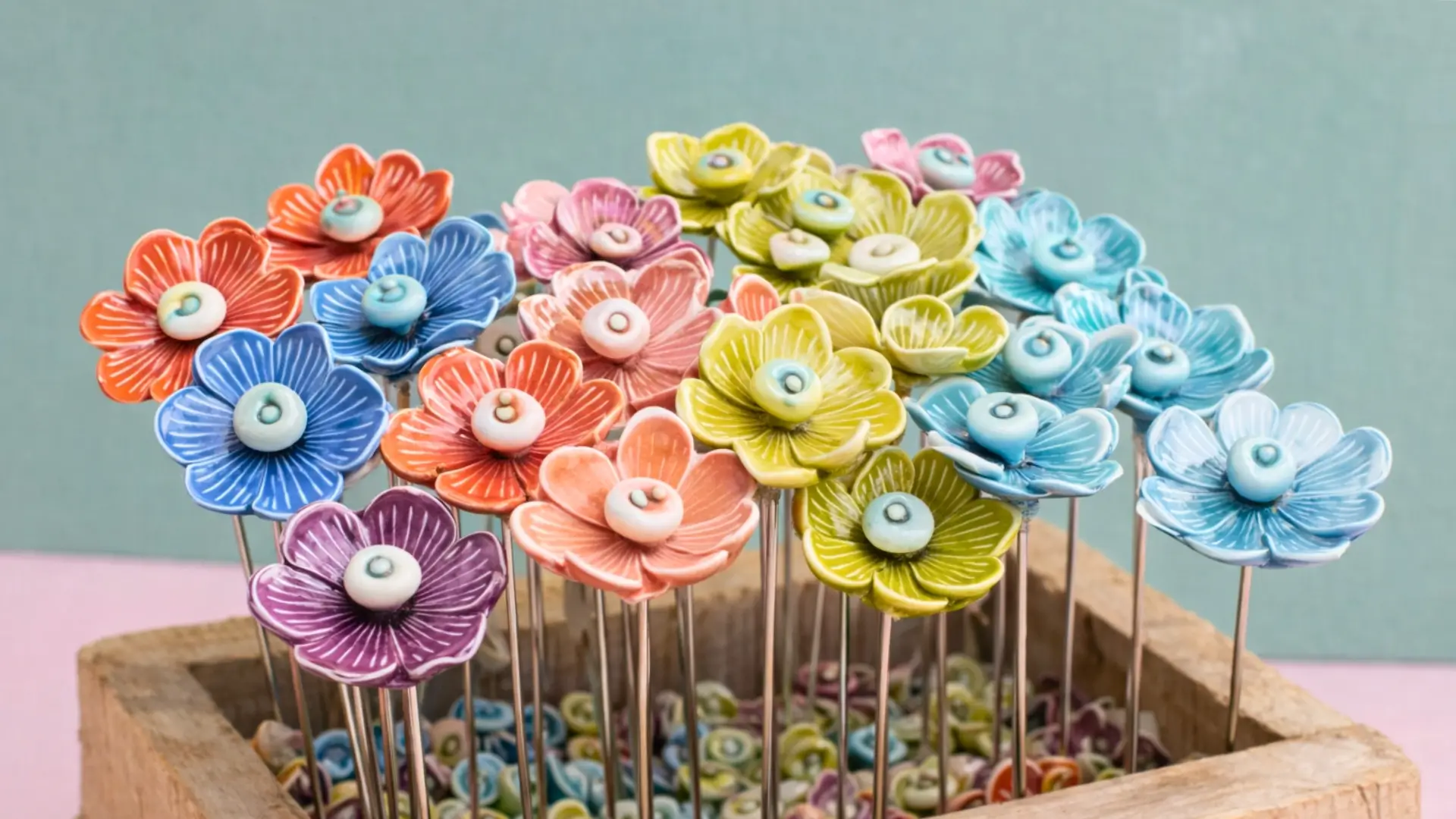
Are you looking for ways to make science fun and engaging for your preschooler at home? You’ve come to the right place! Young kids are natural scientists, full of curiosity and eagerness to explore the world around them. With simple and enjoyable activities, you can turn your home into a mini science lab where your little one can learn and have a great time. From making a homemade volcano to exploring the wonders of magnets, these easy-to-set-up experiments don’t need fancy equipment. They’re perfect for little hands and curious minds. Get ready to spark a love for science in your preschooler with these playful and educational activities!
Let’s Explore 31 Fun Science Activities for Preschoolers at Home
1. Magic Milk Art
You’ll need:
- A shallow dish
- Milk (the regular kind from the fridge)
- Food coloring (the more colors, the merrier!)
- Dish soap
- Cotton swabs
Fill the dish with a thin layer of milk. Let your kiddo drop food coloring all around the milk – no pattern needed, just plop them in! Now, take a cotton swab, dip it in dish soap, and gently touch it to the milk. BAM! Watch your preschooler’s eyes pop as the colors dance and swirl like a disco for ants. It’s like magic, but you know, with science.
2. Homemade Lava Lamps
You’ll need:
- A clear plastic bottle
- Water
- Vegetable oil
- Food coloring
- Alka-Seltzer tablets (or any fizzy tablet)
Fill the bottle about one-quarter with water and the rest with vegetable oil. Let your tiny scientist add a few drops of food coloring (watch as it zips through the oil and mixes with the water – cool, right?). Now for the showstopper: add the fizzy tablet and watch your homemade lava lamp go wild. Just make sure the cap isn’t on tight or you’ll have a geyser in the living room, and not the cool Yellowstone kind!
3. Ice Excavation
You’ll need:
- Small toys or plastic animals
- Water
- Balloons or a bowl
- Salt
- Droppers or spoons
Freeze toys in balloons or a bowl filled with water (make sure they’re toys that can handle the cold). Once frozen, cut the balloon or flip the bowl to get your ice block out. Give your kiddo some warm water with salt dissolved in it and a dropper or spoon. They’ll go all Indiana Jones on the ice block to rescue their toys. As the salt touches the ice, it’ll start to melt – science for the win!
4. Rainbow in a Jar
You’ll need:
- A tall, clear jar or glass
- Honey
- Light corn syrup
- Dish soap
- Water
- Vegetable oil
- Rubbing alcohol
- Food coloring (red, blue, green, whatever you like!)
5. Dancing Raisins
Create a rainbow in a jar by carefully pouring each liquid one after the other. Start with honey, then light corn syrup, followed by dish soap, water, vegetable oil, and rubbing alcohol. Make sure to add a different food coloring to the water and the rubbing alcohol. Each liquid has to be poured slowly and into the center of the previous one. They won’t mix because they’re like that group of moms at the park who just don’t vibe together. Ta-da! A rainbow that defies gravity!
You’ll need:
- Clear soda or fizzy water
- A tall, clear glass
- Raisins
Pour the soda or fizzy water into the glass and drop a few raisins in. Wait a bit and watch them start to dance up and down like they’ve got the groove. It’s all thanks to the bubbles in the drink that stick to the rough surface of the raisins and carry them up until they pop and the raisins sink again. It’s like a tiny, wrinkly ballet!
6. Lemon Volcanoes
You’ll need:
- Lemons
- Baking soda
- Food coloring (optional)
- Dish soap (also optional, but it makes it more bubbly)
- A tray (because, well, mess)
Cut the lemons in half and squeeze them a bit to get the juices flowing (but don’t squeeze them dry). Put them on the tray. Let your mini-me add a few drops of food coloring onto the lemon halves. Sprinkle on some baking soda, and if you’re feeling extra, add a drop of dish soap. Now, watch your little one’s eyes light up as the lemon halves fizz and bubble like tiny volcanoes. Who knew science could be so… zesty?
7. Balloon Rocket
You’ll need:
- A balloon
- String
- A straw
- Tape
Tie one end of the string to a chair or doorknob. Thread the straw onto the string and tie the other end of the string to another fixed point across the room. Blow up the balloon (don’t tie it!) and tape it to the straw. When you’re ready, let the balloon go and watch it zoom across the string. It’s Newton’s third law in action: for every action, there’s an equal and opposite reaction – or in mom terms, the more coffee you drink, the faster you can run after your preschooler.
8. Cloud in a Jar
You’ll need:
- A jar
- Hot water
- Ice
- Hairspray
Pour hot water into the jar, swish it around, and then pour it out. Quickly spray some hairspray into the jar, and place a bag of ice on top. Watch a cloud form inside the jar. Why? The hot air in the jar rises, meets the cold air from the ice, and creates condensation – fancy word for “cloud sweat.” It’s like making your own weather, minus the need for a TV weatherperson’s haircut.
9. Invisible Ink
You’ll need:
- Lemons
- Water
- A cotton swab or small paintbrush
- Paper
Squeeze some lemon juice and mix it with a tiny bit of water. Dip the cotton swab or brush in the mix and write a secret message on the paper. When it dries, hold it up to a lightbulb or heat source (moms, that’s your job – safety first!) and watch the message appear. It’s like your kiddo is a spy, and their mission is to decode the secret to bedtime cooperation.
10. Planting Seeds in Eggshells
You’ll need:
- Eggshells
- Seeds (like beans or sunflowers)
- Soil
- An egg carton
After your next breakfast, keep the eggshells and clean them out. Place them in an egg carton, fill them with soil, and let your little one plant some seeds in them. Water them and place them in the sun. It’s a little garden that teaches patience, care, and the thrill of seeing something grow – just like watching your little ones sprout up before your eyes (grab
11. Oobleck: The Non-Newtonian Fluid
You’ll need:
- Cornstarch
- Water
- Food coloring (for extra fun)
In a bowl, mix about 1 cup of cornstarch with ½ cup of water. Add a few drops of food coloring if you want to make it snazzy. Now let your kiddo’s fingers dive in! Oobleck is a strange creature; it turns solid when you press it but flows like a liquid when you let it relax. It’s like teaching them about solids and liquids without them realizing they’re getting a science lesson. Plus, trying to say “non-Newtonian fluid” can lead to some pretty hilarious attempts that sound more like sneezes than science.

12. The Power of Static Electricity
You’ll need:
- Balloons
- Hair (theirs, yours, the dog’s – whoever is willing)
- Small pieces of paper or confetti
Blow up a balloon and tie it off. Have your child rub it on their head (a great excuse for a funky hairstyle). Then, take the balloon near the pieces of paper or confetti and watch as they jump to the balloon like metal to a magnet. Science buzzwords for the day: static electricity. And all you thought balloons were good for was parties and making that funny squeaky sound!
13. Homemade Playdough Circuit
You’ll need:
- Homemade salt playdough (I have an easy playdough recipe for you here)
- LED lights (from an old Christmas string, maybe?)
- Battery pack with wires (you can get this from a dollar store or an old toy)
Make the playdough with your kiddos, and while you’re at it, teach them about measuring and mixing. Once done, create two playdough blobs and insert the LED legs into them, making sure they don’t touch. Attach the wires from the battery pack to each blob of playdough. When you connect the circuit, the LED should light up! It’s a great way to shine a light (literally) on how electricity works. Plus, who knew playdough could be part of an electrical engineer’s toolkit?
14. DIY Sundial
You’ll need:
- A sunny day (a rare commodity in some parts!)
- A plate or flat surface
- A straight stick or pencil
- Rocks or markers
Place the stick or pencil in the center of the plate, standing straight up. Every hour, mark the shadow’s position with a rock or a marker. Come back in an hour and do it again. By the end of the day, you’ll have a clock on the ground! It’s like we’re going back in time and teaching kids how people told time before smartwatches and phones. Who knew shadows could tell time? They’re not just for making bunny shapes with your hands!
15. Colorful Celery
You’ll need:
- Celery stalks with leaves
- Clear glasses
- Water
- Food coloring
Fill the glasses with water and add a few drops of different food coloring to each one. Cut the end off the celery and place one in each glass. Wait a few hours (or a day for more dramatic results), and then have a look. The leaves will start to change color! This shows how plants drink water. It’s like giving the celery a makeover, and who doesn’t love a good spa day, even if you’re a vegetable?
16. Bubble Science
You’ll need:
- Dish soap
- Water
- Glycerin or corn syrup
- A bubble wand or a bent wire
Mix dish soap, water, and a little glycerin or corn syrup to make super-strong bubbles. The glycerin or corn syrup makes the bubbles stronger, so they don’t pop as easily. Challenge your little ones to see who can make the biggest bubble, or who can make a bubble last the longest. It’s a competition where everyone pops – I mean, tops – the charts!
17. Rock Candy Geodes
You’ll need:
- Sugar
- Water
- Food coloring
- Eggshells
Create a super-saturated sugar solution by boiling water and dissolving as much sugar as possible in it. Add food coloring for some gem-like dazzle. Pour the mixture into clean eggshell halves and wait. It takes a few days, but crystals will form as the water evaporates. It’s a sweet lesson on saturation and evaporation. Plus, you end up with edible rocks. If only all geology was this tasty!
18. Telescope Time
You’ll need:
- Two magnifying glasses of different sizes
- Two cardboard tubes (one that can slide into the other)
- Tape
Tape a magnifying glass at the end of each tube. Slide one tube into the other and look through them to make a DIY telescope. It won’t show you the craters on the moon, but it might just give you a closer look at that squirrel who’s been eyeing your bird feeder. It’s a great way to peek at the stars or spy on nature. Just make sure the neighbors know it’s all in the name of science!
19. Pasta Rockets
You’ll need:
- Uncooked penne pasta
- Baking soda
- Vinegar
A container with a narrow neck (like a film canister or a small bottle)
This is basically a small-scale version of those classic vinegar and baking soda volcanoes. Fill the container with a little vinegar, add a pinch of baking soda to a piece of pasta, and quickly place the pasta over the container’s opening. Stand back and watch your pasta rocket take off! It’s a lesson in chemical reactions, and who knew pasta could fly? Not just in the kitchen when the kids are helping, right?
20. Edible Aquifers
You’ll need:
- Clear cups
- Various edible ingredients (gummy bears, crushed cookies, ice cream, etc.)
- Sprite or another clear soda
Layer your ingredients in the cup to simulate the layers of an aquifer. Gummy bears can represent rocks and gravel; crushed cookies can be the sand layer. Pour the clear soda in last to represent water filling the spaces. Then, “drill” with a straw and watch how the “water” moves through the layers. Not only is it a sweet way to learn about groundwater systems, but they get to eat the experiment after!
21. Dancing Corn
You’ll need:
- Popcorn kernels
- A clear glass or jar
- Vinegar
- Baking soda
Fill the jar about three-quarters with vinegar, and add a spoonful of baking soda. Quickly toss in a handful of popcorn kernels and watch them dance up and down in the jar. This happens because the baking soda and vinegar create carbon dioxide bubbles that stick to the kernels, making them float up, then pop and sink down. It’s like a mini science party in a jar, and let’s be real – who doesn’t love a good boogie, even if it’s just corn?
22. Nature’s Paintbrushes
You’ll need:
- A variety of natural materials (leaves, flowers, grass)
- Paper
- Non-toxic paint
Instead of traditional paintbrushes, use what you find in your yard to paint. Dip leaves in paint and press them onto paper to make prints, or use flower petals to create sweeping strokes. Not only does it get creative juices flowing, but it’s also a great opportunity to talk about the different textures and patterns in nature. Plus, it’s an art project that Mother Nature herself would be proud of.
23. Kitchen Scrap Gardening
You’ll need:
- Kitchen scraps (potato eyes, carrot tops, lettuce or cabbage bases, etc.)
- Water
- Small containers or dishes
Instead of tossing out those bits of veggies, use them for science. Place the scraps in water, with only the base touching the liquid. Set them in a sunny spot and change the water every few days. Soon, roots will begin to grow, and new plants will sprout from the tops! It’s a fantastic way to show the cycle of life and how new growth can come from the old. It’s like the ultimate recycling project, and who knows, you might just grow your next salad!
24. Shadow Drawing
You’ll need:
- A sunny day
- Toys or objects with distinctive shapes
- Paper
- Pencils or markers
Place a toy or an object on the paper where it casts a shadow. Trace the shadow every hour to see how it changes throughout the day. It’s a sneaky way to introduce the concept of Earth’s rotation without breaking out a globe and a flashlight. Plus, at the end of the day, you’ve got some pretty unique art to hang on the fridge.
25. Magnet Maze
You’ll need:
- A magnet
- Metal objects like paperclips or small toys
- A cardboard box lid or a baking tray
- Paper
- Markers
Create a maze on the paper, then place it on the tray or inside the box lid. Scatter the metal objects inside the maze. Use the magnet underneath the tray to navigate the objects through the maze without touching the walls. It’s like magic, but with magnets! This will introduce the idea of magnetic fields and might just keep the kids (and let’s be honest, you too) entertained for quite some time.
26. Sink or Float Experiment
You’ll need:
- A clear container filled with water
- Various household items (a cork, a spoon, a plastic toy, a rock, etc.)
Before dropping each item in the water, ask your child to guess whether it will sink or float. This little game is a great way to discuss density and buoyancy without getting too technical. Plus, it’s a splash-free way to do the dishes (not guaranteed, but we can dream).
27. DIY Rain Gauge
You’ll need:
- A clear, straight-sided container
- Ruler
- Permanent marker
- Water
Mark increments on the container using the ruler and the marker. Then, place the container outside where it’s exposed to the rain. After a rainfall, check to see how much rain you’ve collected. It’s a hands-on way to connect with the weather report, and it’ll have your kids hoping for rain for once!
28. Yeast Balloons
You’ll need:
- A small bottle
- Balloon
- Dry yeast
- Sugar
- Warm water
Fill the bottle with warm water, add sugar, and then sprinkle in some yeast. Stretch the balloon over the bottle’s opening and watch as it starts to inflate. This is due to the yeast consuming the sugar and releasing carbon dioxide, which is pretty much the same process used to make bread rise. Science that leads to snacks? Yes, please!
29. Crystal Stars
You’ll need:
- Pipe cleaners
- Borax
- Boiling water
- Mason jars or similar containers
Shape the pipe cleaners into stars or any shape your kids like. Mix Borax into boiling water until it dissolves, creating a supersaturated solution. Hang the pipe cleaner shapes into the jars filled with the solution, making sure they don’t touch the bottom or sides. Let them sit overnight, and in the morning, voilà! You’ll have crystal-covered creations. It’s a bit of sparkle and science all in one – like a mini chemistry set meets a jewelry-making kit.
30. Gravity-Defying Water
You’ll need:
- A glass
- A piece of cardboard
- Water
Fill the glass completely with water, place the cardboard on top, and then, with a swift, confident motion, flip the glass upside down while keeping the cardboard pressed firmly. When you remove your hand, the cardboard shouldn’t fall, and the water should stay in the glass, defying gravity. It’s a neat trick to demonstrate air pressure – just maybe do it outside, or you’ll have a fun science activity followed by a mop-up operation.
31. Colorful Milk Fireworks
You’ll need:
- A shallow dish
- Milk (whole or 2% works best)
- Food coloring
- Dish soap
- Cotton swabs
Pour milk into the dish, add drops of food coloring, and then touch a cotton swab dipped in dish soap to the milk’s surface. The colors will burst and swirl like fireworks, thanks to the fat in the milk reacting with the soap. It’s a color show that would impress even the toughest preschool critic.
Final Thoughts
Bringing science into your home with these fun activities is a fantastic way to nurture your preschooler’s natural curiosity. Not only do these simple experiments provide hours of entertainment, but they also lay the foundation for a lifelong love of learning and exploration.



